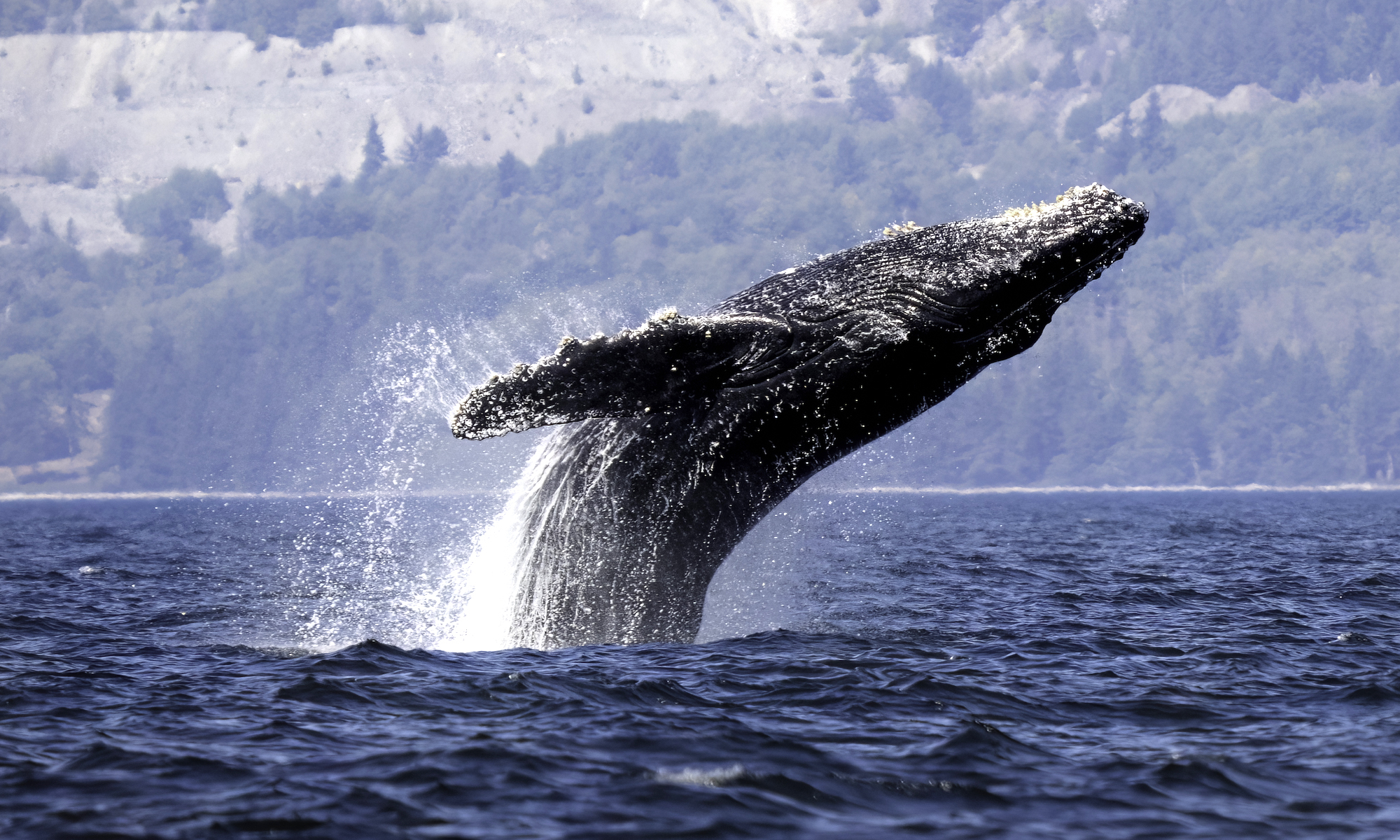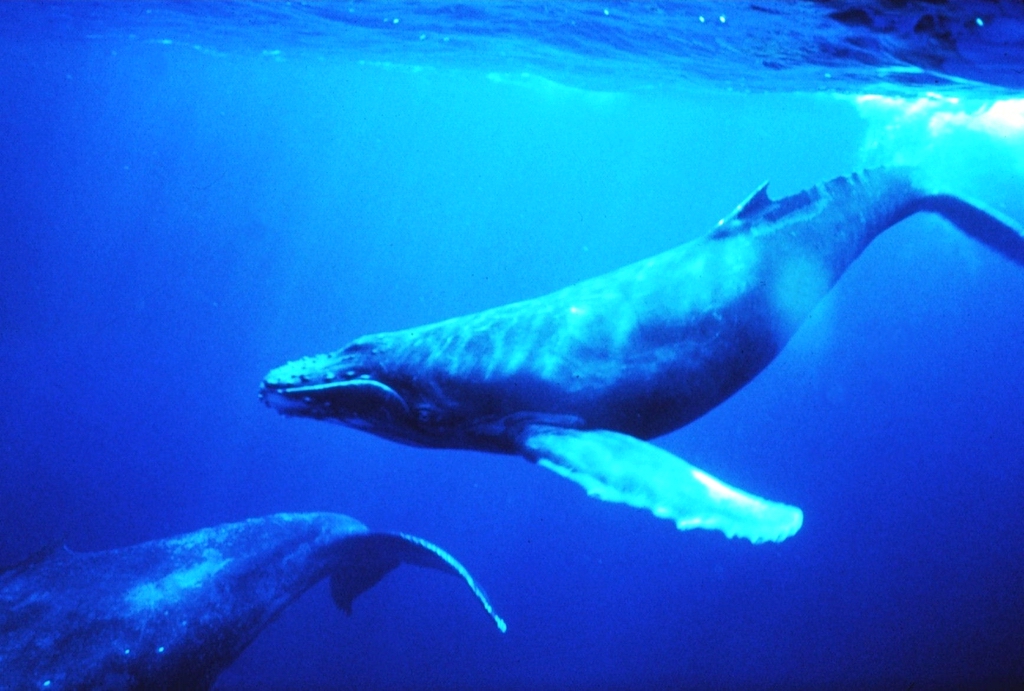The sound came at dusk about a half hour after sunset. The hydrophone at Point Robinson captured a series of descending moans from a giant beast making its way through the murky waters of Puget Sound. Through the hum of the recording came the classic sounds of a humpback whale.
To scientists, the call was an announcement of sorts, the equivalent of a resounding “we’re here.” It marked one of the first humpback vocalizations ever captured in south Puget Sound, and it was part of an upward trend for humpbacks in the Pacific Northwest in general.
Once hunted to near extinction, the whales are now making what many are calling a “humpback comeback.” Last year was a record-breaker for the whales with about 2000 individuals documented inside the waters of Washington and Southern British Columbia. That is up from just a handful of sightings in the 1980s and 1990s, and, as with the old adage about smoke and fire, where there are whales, there are sounds.
During the fall months, the Salish Sea comes alive with “whups,” “moans,” “growls” and an assorted variety of “creaks,” “trumpets,” “buzzes” and other humpback vocalizations. These calls and many others are being carefully collected by scientists in a new repertoire catalogue sponsored by the Orcasound hydrophone network.
While not necessarily songs themselves, the sounds are a prelude of sorts to what the whales will be singing later in the year on their breeding grounds in places like Hawaii and Mexico. In the coming winter, in clear, tropical waters around the world, male humpbacks will sing day and night, turning the ocean into a vast concert hall.
Famous singers
Humpbacks are famous for their calls. If any whale were to win a Grammy award, it would probably be a humpback. Thanks in part to popular record albums from the 1970s, the whales’ low, cello-like songs have become synonymous with the music of the deep. But like most good musicians, the whales didn’t get here without a lot of practice.
Studies show that the whales pass their songs to each other from year to year, gradually learning and refining them, stringing together different melodies and song ‘bouts.’ Here in the Salish Sea, humpbacks began testing out their voices this month.



